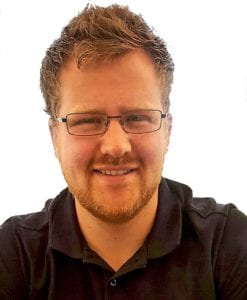Many of South Africa’s wastewater treatment works (WWTWs) are overdesigned and face serious operational and maintenance flaws. Jacques Nieuwoudt, process engineer, AquaPlan Watertreatment Engineering, discusses how the capacity, efficiency and quality of WWTWs can be improved in a timely, cost-effective manner.
Why is capacitating the country’s WWTWs important now more than ever?
JN For the past few years, South Africa (like many other countries abroad) has found itself facing a difficult decision regarding its current and future WWTW infrastructure, skills and budgetary allowances. With water being scarce in areas across the country due to persistent drought conditions over the past few years, freshwater supplies are steadily deteriorating while the country’s population is increasing – creating more demand for sustainable solutions. Adding to this, most of the current WWTW effluent discharges are not within spec, further polluting the already drought-stricken water bodies. Therefore, it is important to investigate and invest in WWTW infrastructure and the newer technologies available, to increase both the capacity of the existing works and treatment efficiencies.What products and services do you recommend for rapidly improving WWTW capacity?
Most WWTWs are overdesigned when it comes to capacity; so, in the interim, loading can be increased without significant impact on overall effluent quality. Control/automation is, however, critical, with instrumentation for flow, level and final effluent required to ensure optimal plant management and reduce operator intervention. Operator training and skill highly impacts plant performance, as well as proper O&M manuals and technical details. Should these be insufficient or non-existent, it is highly recommended to review and provide services accordingly.How can capacity improvement be executed at scale within a reasonable timeline?
In recent years, package plants have gained a lot of attention. This is due to the fact that the entire plant can be manufactured (mainly of steel construction) and tested off-site, with lower footprints (for similar capacities) and minimal civil works required for installation. AquaPlan offers a vast array of package plant solutions, of which skid-mounted WWTWs are one option. The added benefits of package plants are that fabrication times are shorter (dependant on the capacity required) and plants can be relocated to another area of benefit, once the permanent civil installation is complete.What interim solutions do you recommend where large civil works need to be undertaken?
Depending on the scope of the work to be undertaken (such as refurbishment of existing installations), certain process steps can be isolated by the installation of a package solution. Thus, the entire plant need not be shut down for works to be executed. For new installations, a good interim solution is to install a complete package treatment plant that would be able to receive and treat a portion of the full future planned capacity, while the large civils work continues. If additional capacity is required, additional ‘packages’, process skids or units can be added and interconnected, with minor upgrades to the control system required. Then when the full civil structure is commissioned and operational, the package plant can be moved to a new site or even a small-demand area, such as a small town or rural development.








